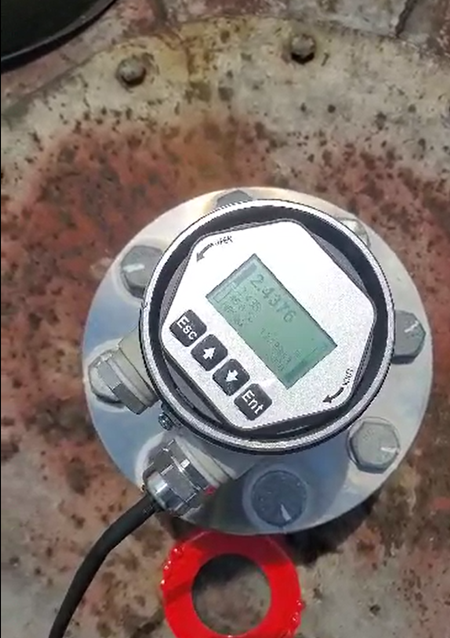Radar Level Transmitters Used in By-Pass and Waveguide Tubes
Radar level transmitters are widely used in industrial applications for accurate and reliable level measurement. In many cases, they are installed in by-pass tubes and waveguide tubes to provide precise readings even in challenging conditions.
Why Install Radar Level Transmitters in By-Pass and Waveguide Tubes?
Installing radar level transmitters in by-pass or waveguide tubes offers several advantages. These tubes provide a controlled environment that helps eliminate interference from external factors, such as turbulence, foam, or other objects in the process vessel. The design of these tubes allows the radar signal to travel in a straight path, reducing the chances of signal distortion and enhancing measurement reliability.
By-pass tubes are particularly useful in applications where the radar level transmitter needs to be installed near the process, providing easy access for calibration and maintenance. Waveguide tubes, on the other hand, guide radar signals more effectively, especially in cases where the measurement needs to be taken from a more challenging position or environment.
Key Requirements for Installation
Material Selection for the Tube: To ensure proper radar signal transmission, the material of the by-pass or waveguide tube should be metal. Non-metallic materials like plastic, resin glass, or composites are not suitable for radar applications because they cannot adequately shield the radar signal from external interference. For optimal performance, the tube should be made of stainless steel or other conductive metals that can block external noise and provide a clean measurement.
Tube Size and Shape: The diameter of the tube must be constant and smooth inside to ensure that the radar signal travels undisturbed. A tube that is too narrow or has irregularities, such as rust or grooves, can cause signal reflection and reduce the accuracy of measurements. The tube should also have a hole for the radar signal to pass through. The minimum hole diameter should be 0.25 inches (6 mm), and the hole size should not exceed 10% of the tube diameter. The distance between holes should be at least 6 inches (150 mm).
Tube Alignment: The radar level transmitter needs to be installed in a way that minimizes the chance of interference from surrounding objects like other pipes, agitators, or foam. The tube should be placed in a location where these sources of interference are minimized. The alignment of the radar transmitter within the tube is crucial for ensuring accurate measurements.
Avoiding Obstructions: The entrance to the tube should be smooth, and the tube should be free from debris, rust, and other obstructions that could disrupt the radar signal. This is particularly important in applications where clean and consistent measurements are required.

Installation Steps for By-Pass and Waveguide Tubes
Positioning the Radar Transmitter: The radar level transmitter should be installed in the center of the tube to ensure that the radar signal is properly transmitted. For by-pass tubes, the transmitter can be installed directly above or below the process vessel, allowing it to be closer to the measurement area. For waveguide tubes, the positioning should ensure that the radar signal can travel through the tube with minimal obstruction.
Using Appropriate Valves: By-pass tubes often come with valves that allow for calibration or removal of the transmitter. These valves must be fully open to avoid restricting the flow of the radar signal. A ball valve or other suitable valve types should be installed to allow for maintenance or sensor calibration without affecting the measurement accuracy.
Securing the Tube: Ensure that the by-pass or waveguide tube is securely mounted to prevent movement during operation. Movement can cause misalignment of the transmitter, leading to inaccurate readings. The tube should be fixed firmly and aligned with the vessel or tank for reliable measurements.
Choosing Between Guided Wave Radar (GWR) and Non-Contact Radar: While both types of radar are suitable for by-pass and waveguide tube installations, guided wave radar (GWR) is often the better choice for these types of installations. GWR systems offer better accuracy and reliability as they rely on a probe that guides the radar signals through the tube, ensuring minimal interference from external objects. Non-contact radar systems, while suitable for some applications, require more stringent installation requirements to ensure optimal performance.
In smaller-diameter pipes, rigid GWR probes are preferred because they provide stronger signals compared to non-contact radar. For larger pipes, flexible GWR probes are often used, but care must be taken to ensure the probe does not touch the tube walls, which could result in signal reflection and inaccurate readings.
Common Applications of Radar Level Transmitters in By-Pass and Waveguide Tubes
Radar level transmitters in by-pass and waveguide tubes are widely used in various industries, including:
Oil and Gas: In storage tanks or separators, radar transmitters provide accurate level measurements even in the presence of foamy or turbulent fluids.
Chemical and Pharmaceutical: Radar systems are ideal for monitoring level changes in reactors, where the process conditions can fluctuate.
Water and Wastewater Treatment: By-pass tubes help maintain accurate readings for water tanks or sedimentation basins, where high turbidity or foam can interfere with conventional measurement methods.
Food and Beverage: Radar transmitters are used to measure the level of liquid ingredients in tanks, ensuring precise measurement even in harsh environments.
Conclusion
Installing radar level transmitters in by-pass and waveguide tubes is a reliable and effective method for obtaining precise and accurate measurements in challenging conditions. By following the appropriate installation guidelines and selecting the right materials, tube size, and transmitter type, businesses can ensure the long-term performance and accuracy of their radar level measurement systems. Whether using guided wave radar or non-contact radar, it is essential to consider the specific requirements of the application and make informed decisions to optimize performance and reduce maintenance needs.





